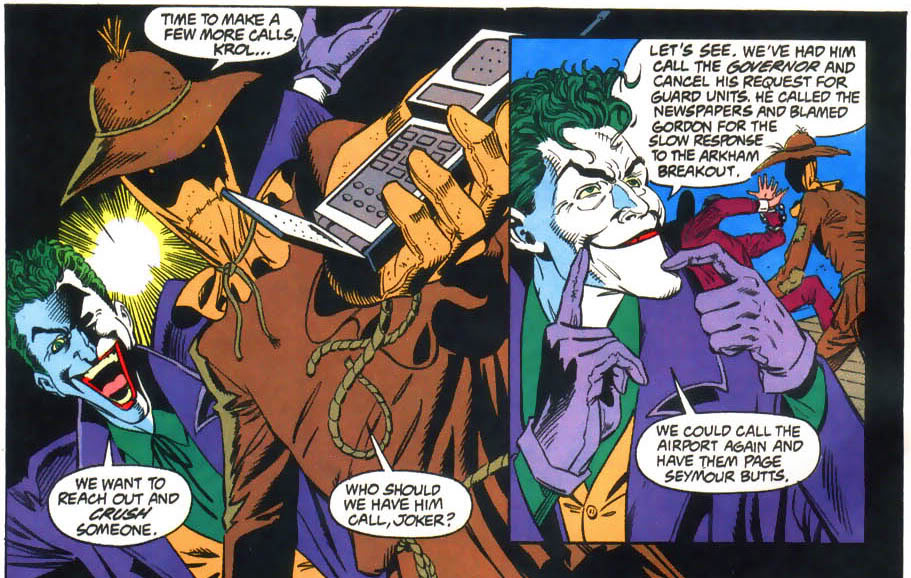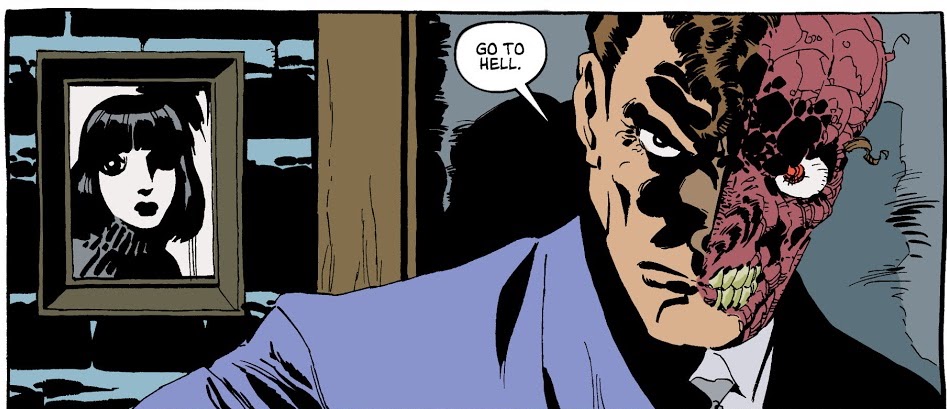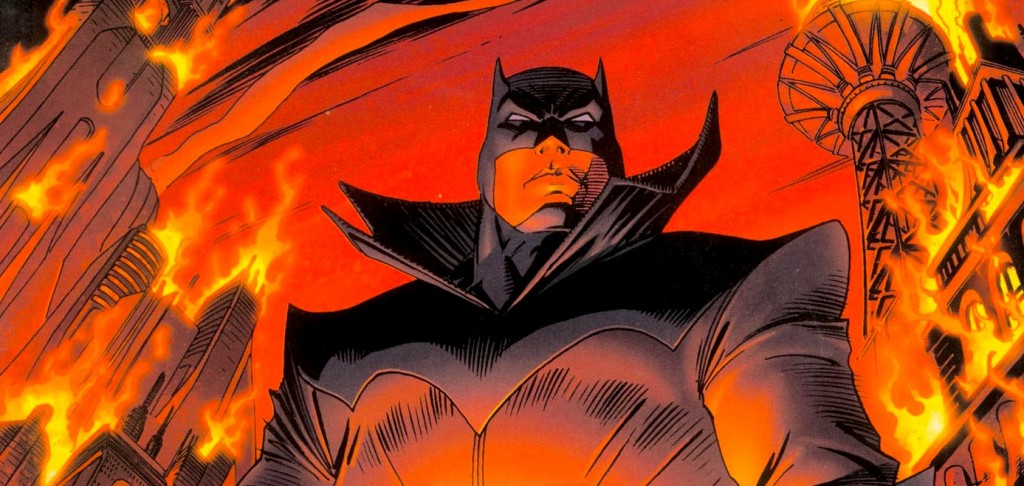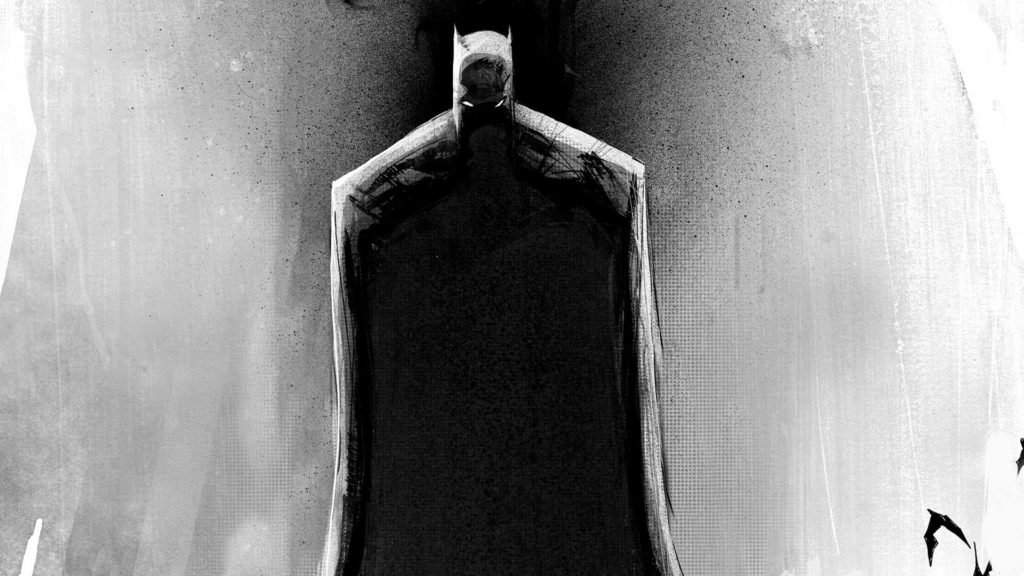Best Batman Comics & Graphic Novels!
Posted by admin on
It’s time for DC’s The Batman to hit theaters in 2022, which means the CBH staff is here to pick some favorite Batman comics and graphic novels to fully immerse yourself in Gotham City.
Much like our guide for Wolverine, these picks represent some personal favorites and more off-the-beaten-path recommendations than the average list. If you’re wondering where best of Batman mainstays like Dark Knight Returns and “Year One” are, well, you can probably find them on my picks for the best comics of all time!
Related:
Best place to start with Batman comics
Absolution
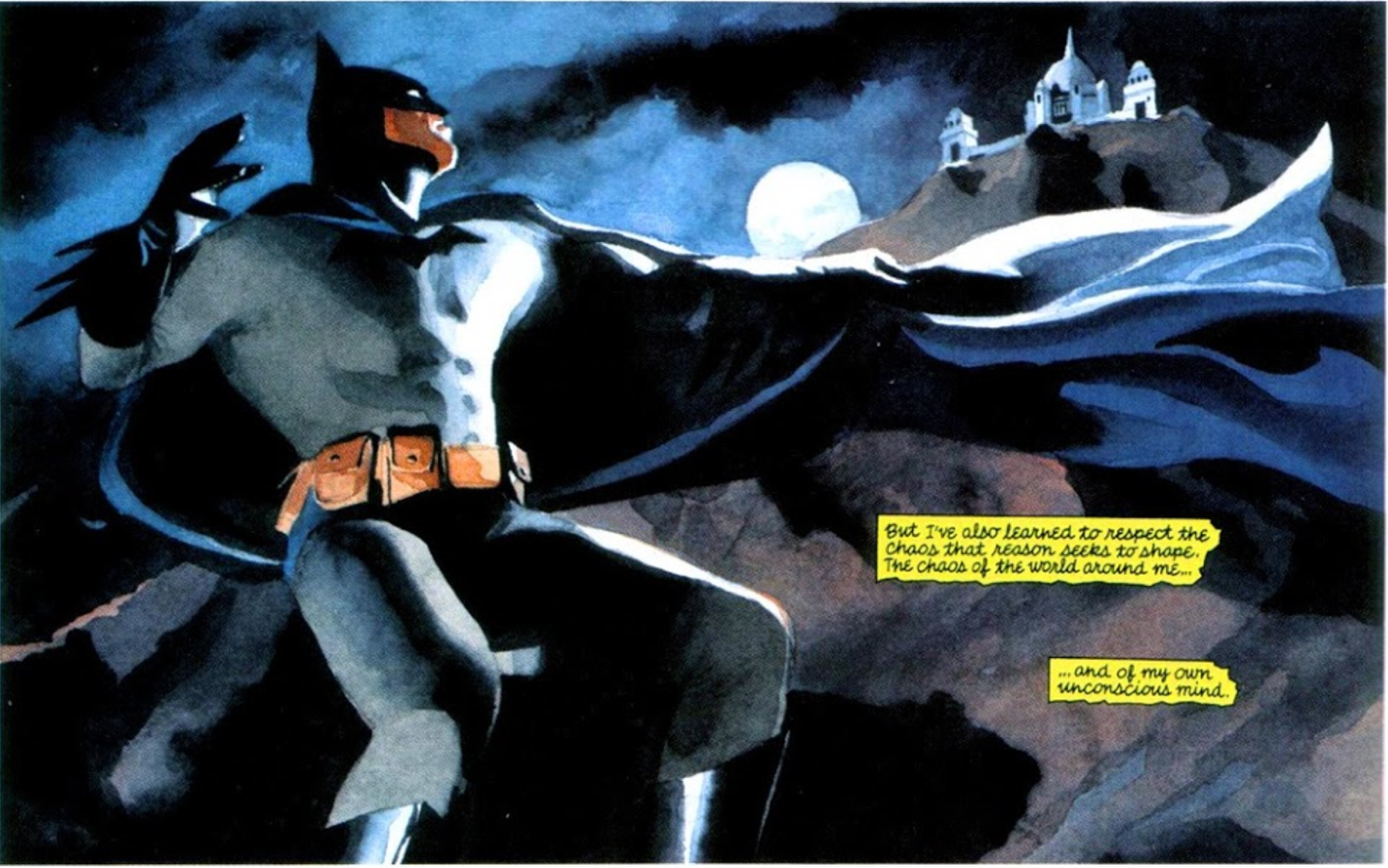
Sean Dillon:
It is often said that Batman is a terrible idea. He is, after all, a rich white guy who goes around punching people in the face. Often, he’s justified because those he fights are often worse than he is, but that nagging cruelty remains. There have been many ways writers have dealt with this aspect of the character from Tom King highlighting the toxicity of the mindset that one can be above anyone else simply due to their narrative position to Grant Morrison framing him as the ideal man who fights corporations to Chuck Dixon, who sees absolutely nothing wrong with Batman punishing a bunch of hoodlums.
And then there’s JM DeMatteis, whose approach to the character is… complicated. It is easy to read his view on the Dark Knight as one brimming with contempt. His stories frequently frame Batman in either opposition to the main characters, tone, or common decency. To provide a few examples, Superman: Speeding Bullets frames the Batman identity as more toxic than the Superman one, “Shadow of the Bat!” has the JLI kill a vampire Batman, and Supergirl: Wings reframes Batman within its mythological system as literal, actual Satan. And then there’s Absolution. Painted expertly by Brian Ashmore, Absolution is the story of Batman hunting down a terrorist over the course of years. While the viewpoint of the narrative largely prioritizes Batman, the book’s sympathies lay primarily with the terrorist.
That’s not to say the book condones blowing up buildings or the like. Rather, we are shown a woman who was young and angry and wanted a better world. Who wishes to atone for her sins by helping everyone around her. And Batman sees this as nothing more than a liar trying to con her way out of going to jail. Criminals, villains, monsters never change. They will always be cruel and in need of men like Batman to take them down.
Being a DeMatteis book, it obviously does not side with this view on humanity. DeMatteis’ work frequently highlights the potential for anyone to be better, to grow and change. That, ultimately, is the failing of Batman and his strength: his unwillingness to give up being himself, to change into someone else. This can lead him to be able to take down any foe who might do harm as well as provide blinders on his perception of the world. He does not grow because he cannot grow. Otherwise, he wouldn’t be Batman.
Black and White
Yavi Mohan
The short story anthology is an underused format in mainstream comics. The first volume of Batman: Black and White may be one of the finest examples that exist; a compilation of twenty 8-page stories from an all-star creative lineup, each one presented (as the title suggests) in stark black and white.
Artistically, it’s glorious. Each artist is a master of their style, and it’s fantastic to see such a range showcased together; from surrealist and chaotic to realistic and intricate. The black and white medium brings out some excellent inking and shading, and is perfectly suited to the Dark Knight. The storytelling is also top-notch, with many of the artists also taking writing duties.
The stories vary in tone; although most contain the darkness that readers expect from tales of Gotham, a couple of more lighthearted yarns are also sprinkled in. Neil Gaiman and Simon Bisley’s “A Black and White World” is great fun, taking Bats and the Joker to levels of meta rarely seen outside of Deadpool. Bruce Timm’s “Two of a Kind” re-enters the world of Batman: The Animated Series, but in a rather less child-friendly light. And my personal favorite, Bill Sienkiewicz’s “Bent Twigs,” shows us Batman and Gotham at their most human.
Many attempts have been made to recreate the success of Batman: Black and White volume 1. There are many gems to be found in the later volumes, and indeed in the recent Harley Quinn: Black + White + Red. The charm and consistency of the first series, however, remains unmatched.
The Riddle
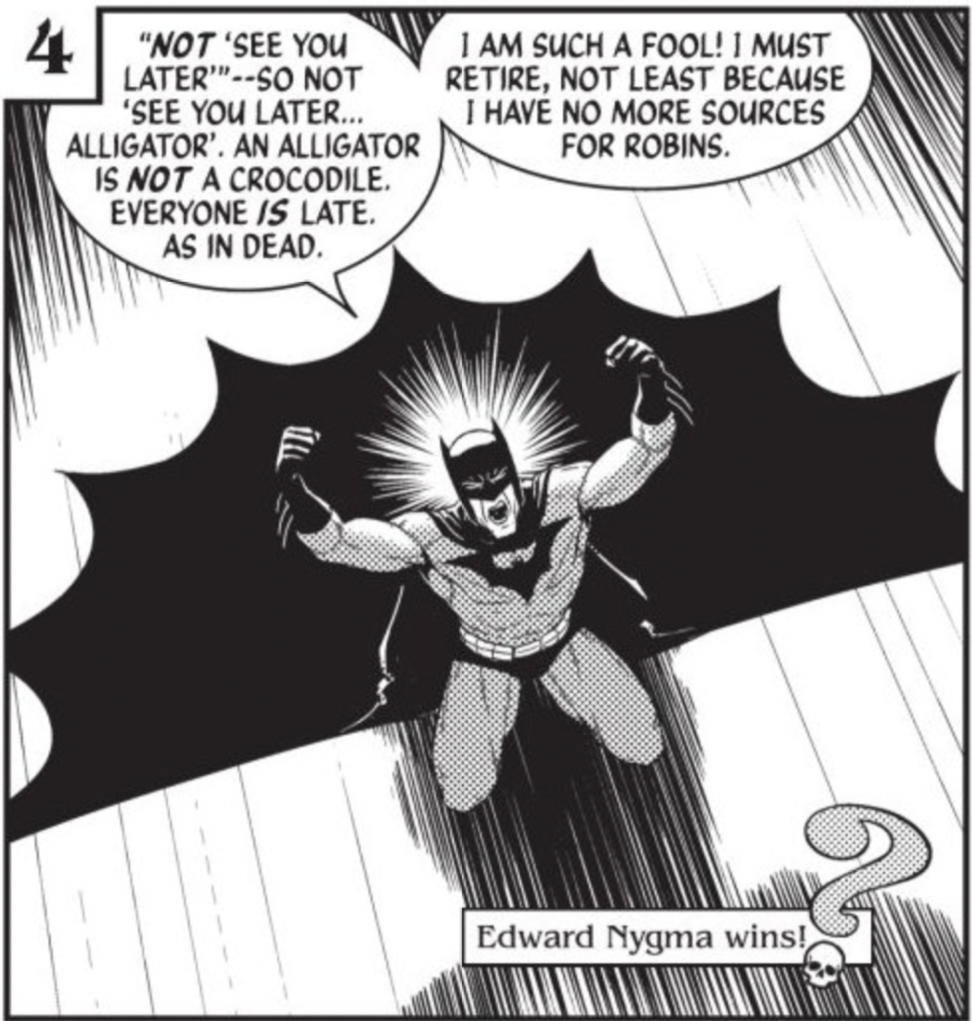
Sean Dillon:
What do you do when you can’t win? When the game is rigged against you and the only way forward is death? This is the central question at the heart of Kieron Gillen and Jamie McKelvie’s short story “The Riddle.” Collected in the Batman: Black and White anthology, “The Riddle” (as you might have guessed) has the caped crusader face off against the Riddler. What makes it interesting, however, is that it’s structured in the form of a choose your own adventure comic. Each panel leads to a different panel and all of them lead to the death and/or defeat of Batman.
And it’s honestly one of the most hilarious Batman comics I’ve read. Gillen utilizes his trademark wit to spectacular degree with a black comedic sensibility unexpected yet fitting within both Gillen and Batman’s canon. To say nothing of McKelvie’s clean cartoonish style, which highlights both the spectacular action, the comedy, and the horror of being trapped within a choose your own adventure game. It’s honestly difficult to talk about this in more than two paragraphs without spoiling some of the better moments of the comic.
So then, the big twist at the heart of the comic, the thing that lets Batman win is at once obvious and amazing: he cheats. Batman doesn’t play the game the Riddler made because that would mean treating the lives at stake as if they’re toys to be broken for his own amusement. Batman, ultimately, isn’t about winning. Not in that way at least. His victory lies in rejecting the game. The format is a trap, a cage locked up tight. And Batman is the master of unlocking.
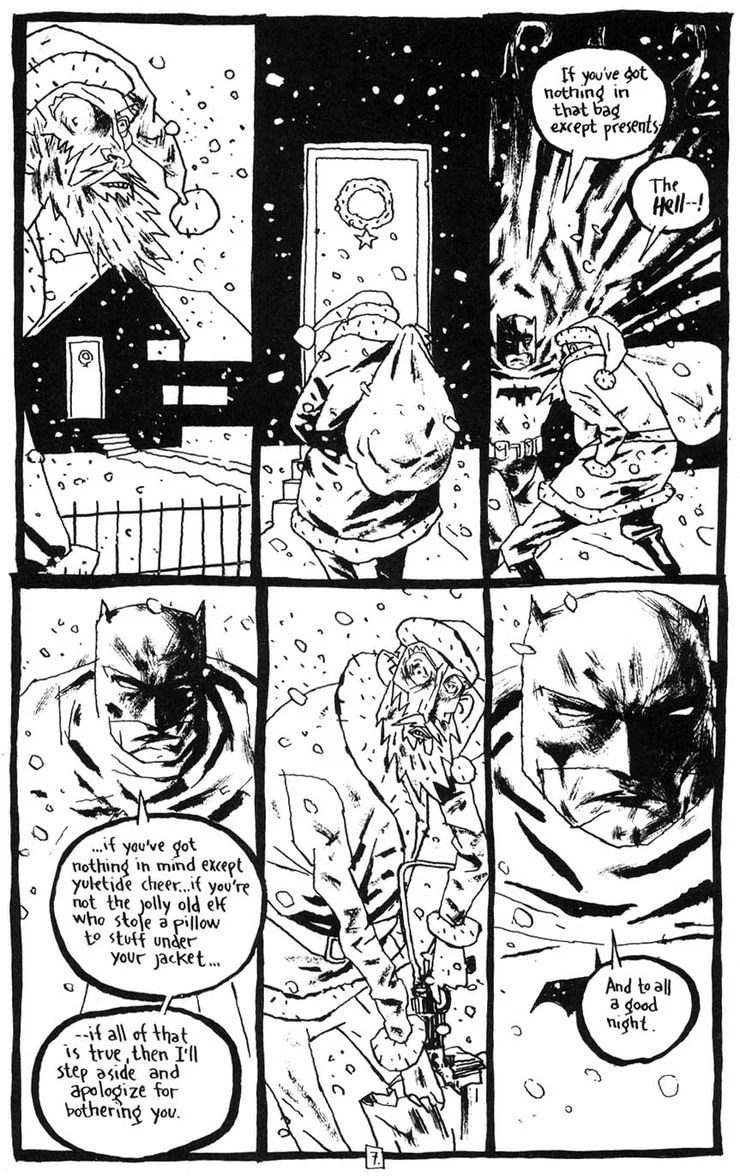 Batman Black and White #3
Batman Black and White #3
Tiffany Babb:
There are many reasons to love “A Slaying Song Tonight” from Dennis O’Neil and Teddy Kristiansen. The art from Kristiansen is stunning and such a great example of the expressive freedom that the Black and White anthology afforded artists who might not normally be able find work on a Batman story. Kristiansen does so much with his contrasting of harsh thin line work, which he uses to depict the citizens and setting of Gotham, to the flowy dry brush strokes, which he uses to depict Batman’s costume.
The story itself is wry and surprising, poking a little fun at the broody aspects of Batman while showcasing the amount of heart that can go into stories about the character. The world of the story is set up quickly and specifically, and because it touches on some of the central ideas of Batman (his loneliness, the darkness of Gotham, the fact that Batman’s work keeps him from other things), it’s always stood out as a quintessential Batman story to me.
It’s no news to any reader of Batman comics that many, if not most, of Batman’s stories focus on the villain. But in “A Slaying Song Tonight,” the villain could be considered an afterthought, only applicable in the way that he gives Batman something to do. Instead of the conflict being Batman versus villain, the conflict is Batman versus his own moodiness and the boundaries that he sets between himself and happiness. The story doesn’t promise to break Batman or even to heal him, but it does provide a small respite in his quest for justice, and in doing so, it brings a smile to my face.
Cast Shadows
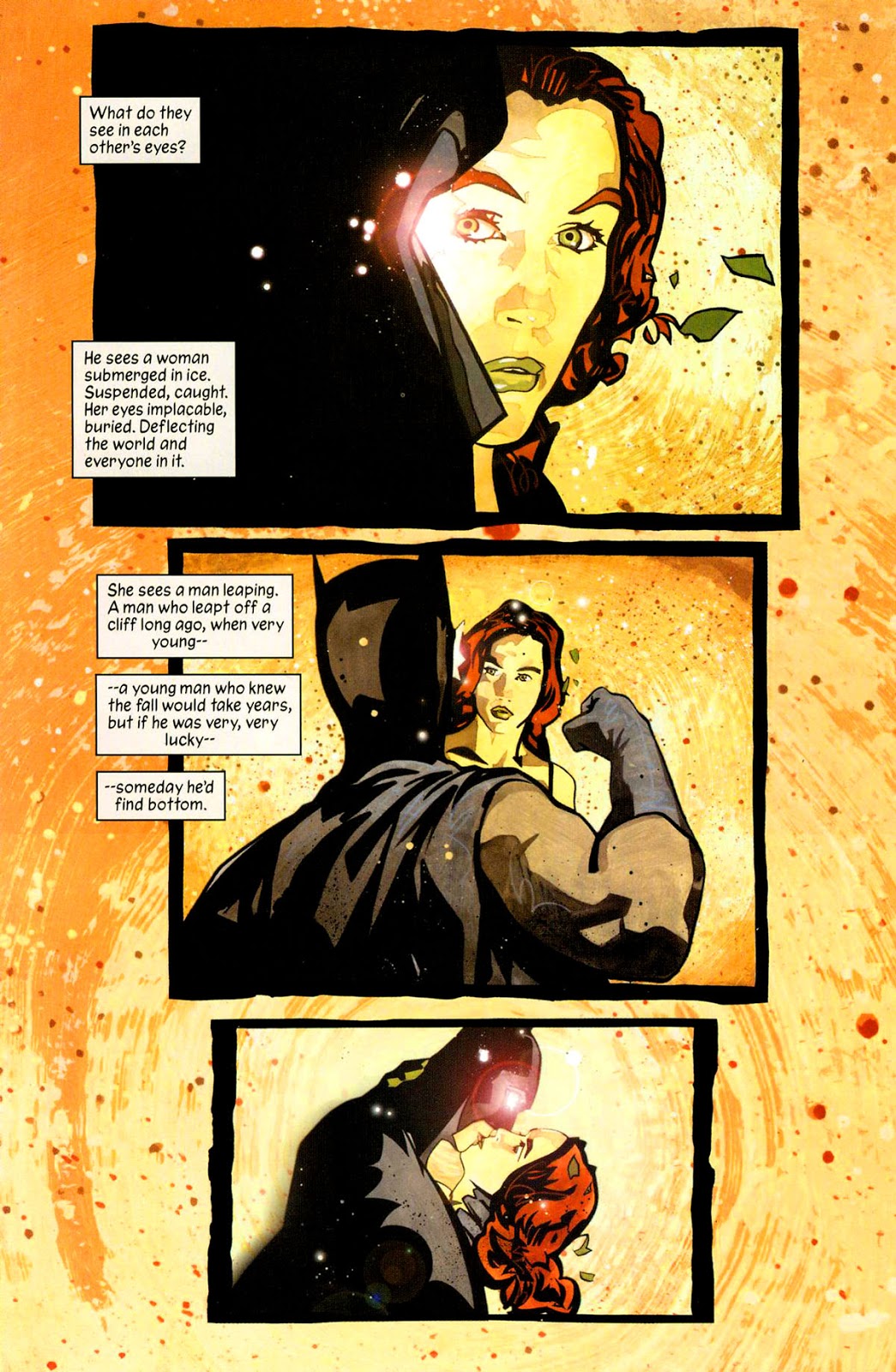
Sean Dillon:
Ann Nocenti is one of the most underrated writers in the history of comics. There are certainly a number of Daredevil stories one could use to highlight this point. But since this is a Batman article, the only sensible option is Cast Shadows. Cast Shadows is a team up graphic novel between the dark knight detective and Poison Ivy as a mysterious plant is causing people to lash out and die. But it’s also about isolation, the feeling that the world is out to destroy any light within you. It’s about being in a cage, wanting to escape that cage, if only to see the sun. Of being unable to be yourself because the world is cruel, even as it gives small kindnesses.
But perhaps the book’s shining grace lies in the work of John Van Fleet. Fleet’s work in Cast Shadows has a warmth to it that is at once soothing and overwhelming. Take, for example, the climatic kiss towards the end of the book. Each panel is drawn shrinking as they descend down the page. The distance from the characters equally starts to grow further and further. The warmth of the abstract background feels like the sun. The romance and distance of the moment feels perfect. It’s a love, one built on understanding and caring above all else.
To say nothing of the captions that Nocenti includes with the images. Words that, in other hands, could feel overdramatic and drab. But the poetry she uses only heightens the emotions of the moment. An unspoken understanding between two people who know each other intimately, yet barely know each other at all. A romance, but not one of sexuality. But something truly special nevertheless.
Batman: Knightfall
Austin Gorton:
My entry point for comic books was the Marvel Universe trading cards, which means most of the early comics I read were from Marvel. Yet at the same time, I read the Super Dictionary as a child, had played with Kenner’s Super Powers action figures, and watched syndicated reruns of Batman ‘66. So even before I got into comics, I was familiar with DC’s characters and, particularly, Batman. Thus, when I decided to branch out into DC Comics for the first time, Batman was an easy and familiar choice.
What I found – thanks to a three pack of comics at Toys R Us, back when both widely-available comics and Toys R Us still existed – was “Knightfall”, the seminal early 90s story which saw Batman run through a gauntlet of his biggest villains, culminating in his back being broken by Bane and Bruce Wayne being replaced by a new, edgier, Batman. It was a fantastic introduction to the comic book version of the character, and remains my favorite Batman story to this day.
The narrative conceit of Batman fighting his way through his Rogue’s Gallery, from the big (Joker) to the medium (Killer Croc) to the “only cared about by certain writers” (Amygdala) is a perfect hook for a big catchy story to both introduce a new reader to the (comic book) world of Batman and remind existing readers of why they enjoy the character, to the point stories such as “Hush” would repeat the gimmick later. The thematic conceit of pushing Batman to the brink to show what makes him tick hits the same mix of catchy and effective. Even if the motivations of Bane, the central villain of the arc orchestrating the assault on Batman, are somewhat half-baked, the moment when he emerges at the end of Batman’s gauntlet and proceeds to break Bruce Wayne once and (seemingly) for all is chilling. Additionally, most of the chapters unfolding in the Batman title serve as a kind of farewell tour for legendary artist Jim Aparo, with each issue pairing him with a different inker, showcasing the various facets of his style.
All in all, the combination of a tremendous narrative hook, the involvement of some of Batman’s most notable villains, the presence of an all-time great Batman artist, and the thematic question of “what makes Batman, Batman?” results in a tremendously fun story, one I’ve returned to – and enjoyed – again and again since the days when it served as my entry in the world of DC Comics.
Dark Victory
Yavi Mohan
No, I am not one of those writers who rank Iron Man 2 above Avengers: Endgame to generate hate-clicks for their article. I genuinely do like Dark Victory more than The Long Halloween. I realize I’m in a minority here.
There are, of course, a great deal of similarities between the two comics. The Long Halloween, written by Jeph Loeb with iconic art by Tim Sale, is a Year One-era story that has Batman dealing with various members of his rogue’s gallery over the course of a year. It contains the definitive Two-Face origin, which influenced Christopher Nolan’s The Dark Knight. Anyone who enjoyed The Long Halloween will enjoy Dark Victory, its sequel from the same creative team. But is Dark Victory, as many critics claim, too much of a rehash? Definitely not.
The art style in both books is the same, but there are certainly no complaints there; it may even be marginally better in the sequel. The story structure is the same – a serial killer whodunnit taking place over several months. The key players are the same, or at least those who survived. But where The Long Halloween was arguably Harvey Dent’s story, Dark Victory is much more Batman’s. This is where we see Bruce reach a fork in the road of his crimefighting career, with one direction promising to take him into new depths of grim isolation. Loeb does a great job of showing us why Batman needed a Robin.
On top of that, Dark Victory is generous with plot twists, and the biggest one is slightly more believable than The Long Halloween’s. It’s true that you can’t really read Dark Victory without having read its predecessor, but nonetheless: it’s an improvement on something that was already excellent.
Knightmares
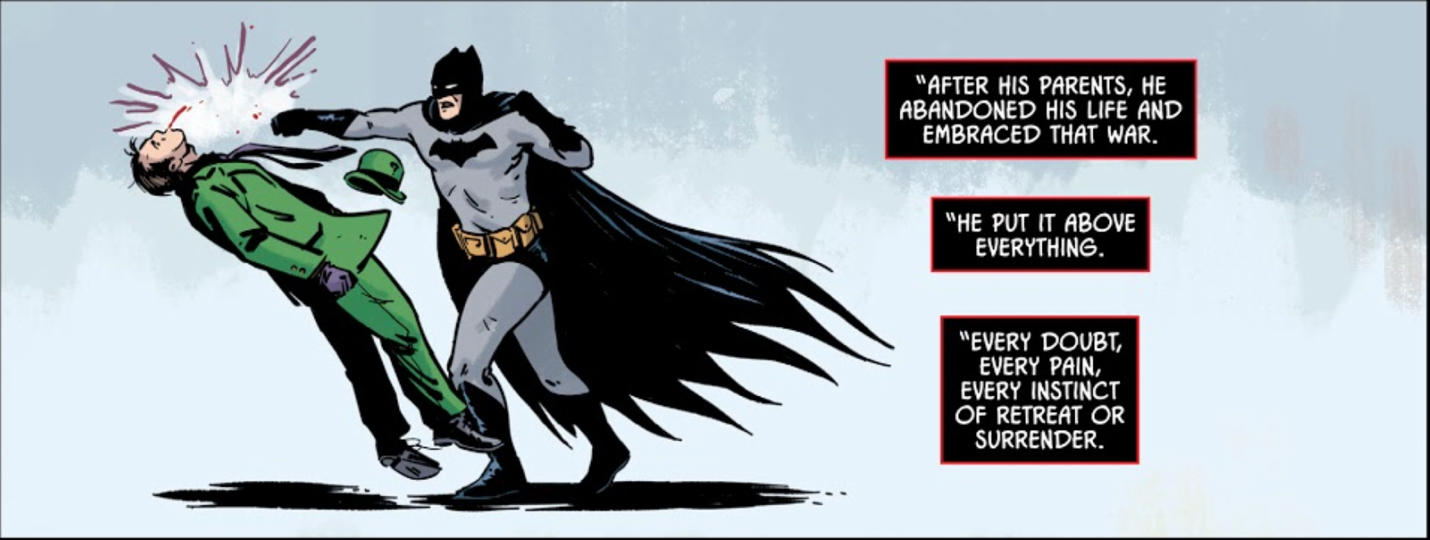
Sean Dillon:
Tom King’s controversial run has many arcs that are quite fascinating. From the war drama approach to event comics in The War of Jokes and Riddles to the silent melancholy of Cold Days to the shifting genres of City of Bane. But for my money, the single best arc of the run comes in Knightmares. Knightmares depicts the Dark Knight trapped in a series of never-ending dreams that confront him about the nature of being Batman.
Which, of course, brings us to the question: What is Batman afraid of? What nightmares does he have? What connects these seemingly unrelated horrors of children murdering adults in the name of vengeance, psychopaths getting off on pointless violence and cruelty, and being happily married while knowing it will all end one day? When confronting a nightmare, especially one that’s also a trap set up to break the Bat, one must be willing to change. To grow and be better rather than regress into the same old cycles.
This is, of course, the core theme of King’s run: that Batman is trapped in someone else’s vision for what he should be. (Whose vision that is depends, considering the ultimate antagonist of the book is an old man version of Batman.) That for him to move forward, he must move past that vision into something else. Within the pages of Knightmares, Bruce Wayne is confronted with his central failing. One many are in denial of even today: He can either be Batman or he can be a person.
Because Batman is eternal. Batman will never break down. But people can. People do. And because we do, we can grow and change and be better. Tom King, through it all, believes Bruce is capable of change. That he can live a good life instead of having a good death. Whether this bears fruit will be determined by what comes next.
Batman & Son
Yavi Mohan
Over the course of nearly seven years, Grant Morrison wrote a Batman story that spanned more than 70 issues and various different titles, even managing to navigate a DC continuity reboot a year or so before they’d finished. Before the story became such a sprawling epic, it started here, in Batman #655.
There are two things you need to know about Morrison’s Batman run. The first is that they consider every Batman story to be canon, even the ones DC explicitly said were not. One such non-canon story was 1987’s “Son of the Demon,” which ended with Talia al Ghul secretly giving birth to Bruce’s baby. Morrison kicks off their run with the reintroduction of that baby, now 10 year old borderline sociopath Damian Wayne. The second thing to know about the run is that it’s as much Damian’s story as it is Batman’s, right from the first issue, the start of the aptly-named “Batman & Son” arc.
That made these early issues controversial, because Damian at the start is absolutely awful. Really, he’s a detestable, violent brat. But if you find yourself wanting to slap him through the page, don’t worry – you’re meant to. What you’re seeing is the start of one of the greatest character arcs in modern comics. And besides, look at his upbringing and tell me if you think that would produce a well-adjusted, polite kid.
Even putting Damian aside, these initial issues on the Batman title are perhaps the most divisive of the run. The content is peak Morrison. There is no exposition whatsoever. Events are sometimes hard to follow, and reference comics going back as far as the 1950s. Everything has a deeper meaning than it seems. You will probably have to read every issue at least twice. In fact, the first time you try, you might hate it. I definitely did.
You might be thinking, “this doesn’t sound like something that belongs on a ‘Best of Batman’ article”. And depending on the kind of reader you are, you might be right. If you try to race through this story, you will not enjoy it. But if you’re willing to put in the time, to take it slowly, perhaps even to read some of the many annotations that can be found online? I can almost promise the story will click for you, and when it does…it’s really something special. But even if you don’t follow the plot 100%, you’ll get to enjoy some seriously awesome moments – including Batman #666, a vision of a post-apocalyptic future with Damian himself wearing the cape and cowl.
The Clown at Midnight
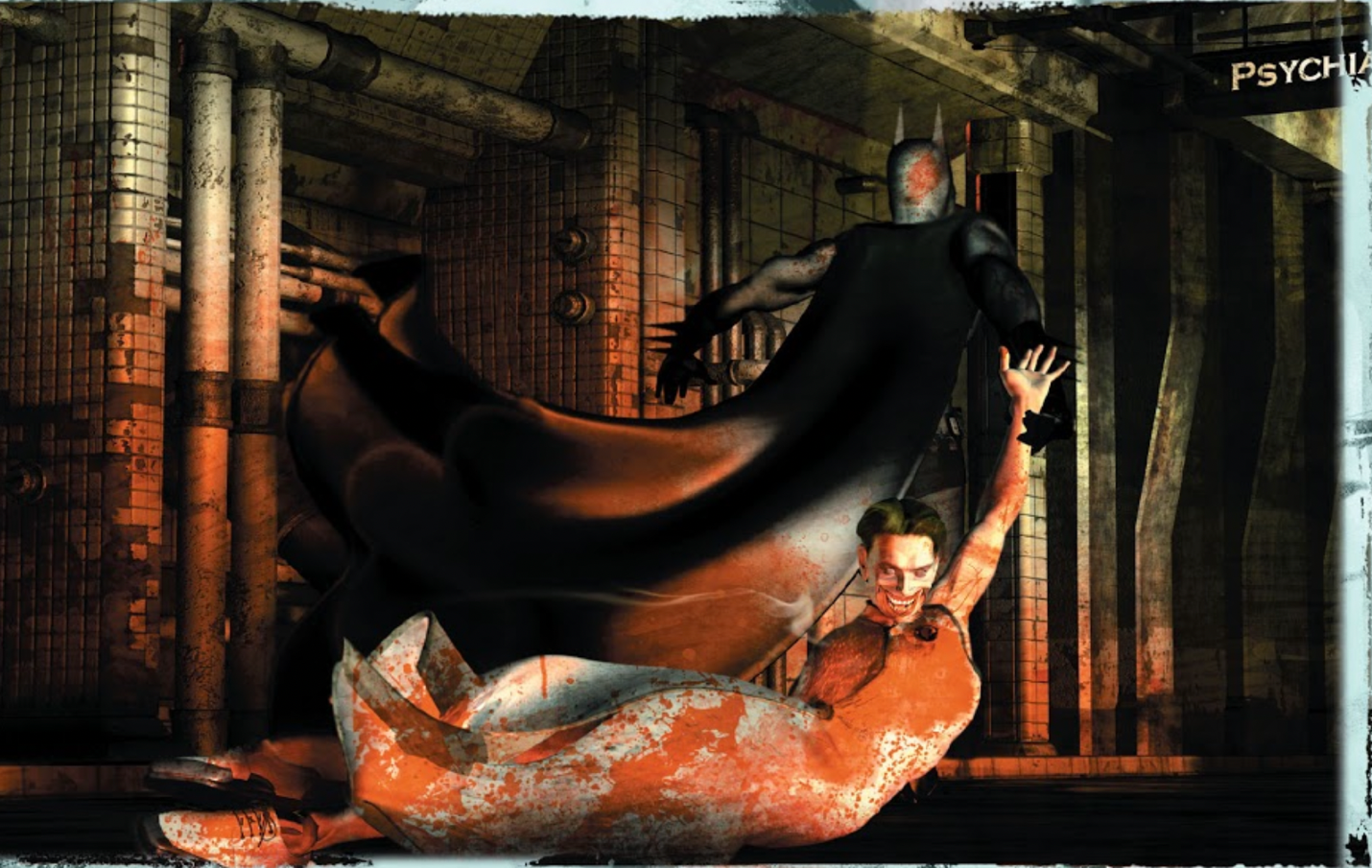
Sean Dillon:
“The Clown at Midnight” is one of those stories that’s actually hard to write about within a short span of words. To truly capture the work done by Grant Morrison and John Van Fleet exploring the relationship between the Joker and Batman through the lens of pulp fiction, grotesque horror in the Ballardian tradition, and sombreros, one must be willing to throw one’s self deep into the madness inherent within said relationship. An utter dismantling of the relationships that previously existed within the Batman comics to push forward into something new and strange.
As with a lot of Morrison’s stories, it was rejected upon initial release before being embraced upon later evaluation. Unlike most other Morrison concepts that receive this treatment, the source of the rejection comes from the nature of the piece. “The Clown at Midnight” is a prose story that is accompanied by art that is deliberately grotesque and uncanny. The prose style itself utilizes a pulp style that focuses on horrible images and implications that make reading the story both invigorating and not for the faint of heart.
And yet, I can’t help but revisit it again and again. It’s the kind of story that rewards rereading with little details like the secrets known by those who smile, the shout outs made to previous stories, the meaning of the very background itself. The Morrison Batman run is one of the strongest the book has ever seen. It’s a fascinating, frustrating, delightful story. “The Clown at Midnight,” then, is that run in microcosm. Consider, for example, how the fatalism of the ending is foreshadowed by the final chapter of this story. Or the dancing between camp and grotesque that permeates the entire run. Not to mention…
And you see what I mean about keeping this short.
The Story of Michael Uslan
Mark Turetsky:
Our current glut of superhero blockbuster movies has raised awareness of two things: First, it’s brought the identities and lore of some of the more obscure comic book creations into the mainstream. Second, it has raised awareness about the complete lack of credit and remuneration for their creators. For every Stan Lee becoming lionized, rightly or wrongly, as the genius behind the Marvel Universe, there’s a Bill Mantlo struggling under massive medical debt while his Rocket Raccoon is the heart and soul of the Guardians of the Galaxy films. Or an Ed Brubaker making more money from an onscreen cameo in Captain America: The Winter Soldier than from the continuing use of The Winter Soldier, a character he co-created in its current incarnation. Even the credit afforded to the titan Jack Kirby is the result of a protracted legal battle that came just short of the Supreme Court. The argument I see in nerd circles consistently is, “well, it’s a bad deal, but they knew it was a bad deal when they made it.” But in the all time hall of fame of bad deals, let’s set aside a moment for one instance where the multi-billion dollar conglomerate got the raw end of the deal.
In the late 1970s, a young man named Michael Uslan, along with MGM film producer Ben Melniker acquired the film rights for Batman. Yes. Two individuals bought the film rights to Batman. I should clarify that in 1979, there wasn’t much of a market for Batman films. It was more than ten years after the end of the campy Adam West TV (and film!) series, and nobody had any plans for the franchise. Uslan was a precursor of the current “the real Batman is a brutal and super-serious fighting man” strain of thinking about superhero media, and took it as a personal affront that West’s rendition was charming and fun.
Uslan and the late Melniker never got to make their movie, but Warner Brothers has been obligated to pay them a percentage of each Batman movie (animated, live action, everything) since the Tim Burton adaptation in 1989. So when you sit down to watch The Batman (in as safe a way as you can), and you see Uslan’s name in the credits among the 6 other producers, just know that it’s because Warner Bros is on the end of a terrible deal.
The Black Mirror
Yavi Mohan:
This is a ‘Best of Batman’ feature, and Batman is Bruce Wayne, right? Well…not always. Some of the most memorable stories feature none other than his protégé and former Robin, Dick Grayson, behind the mask whilst Bruce is indisposed (or taking a break, or “dead”). The Black Mirror is one such tale, first published as Scott Snyder’s 11-issue run on Detective Comics, with Francesco Francavilla and Jock alternating chapters on the artwork.
The Black Mirror is perhaps the strongest argument to date for DC retiring Bruce Wayne and establishing ‘DickBats’ as the permanent status quo. It is proof that you can write a classic Dark Knight story without the damaged billionaire making a single appearance. And Dick never seems like a fill-in Batman (except perhaps to himself). References are made to him being different to Bruce, but Snyder celebrates those differences. This is something fresh, but still Batman. A Batman who makes the occasional quip. A Batman who smiles.
Not that he is given much to smile about in this chilling story, which had Snyder demonstrating his well-established horror credentials. Horror is always most effective when it hits close to home; and is there anything scarier than the idea of someone you know – a friend, a colleague, a member of your family – being an emotionless killer? Snyder takes a leaf out of Year One’s book by placing the Gordon family front and center of this storyline, and Dick’s personal history with them raises the stakes even further. All in all, this is a book that is stronger for Bruce’s absence, and sets the bar for any such future storylines.
The post Best Batman Comics & Graphic Novels! appeared first on Comic Book Herald.

